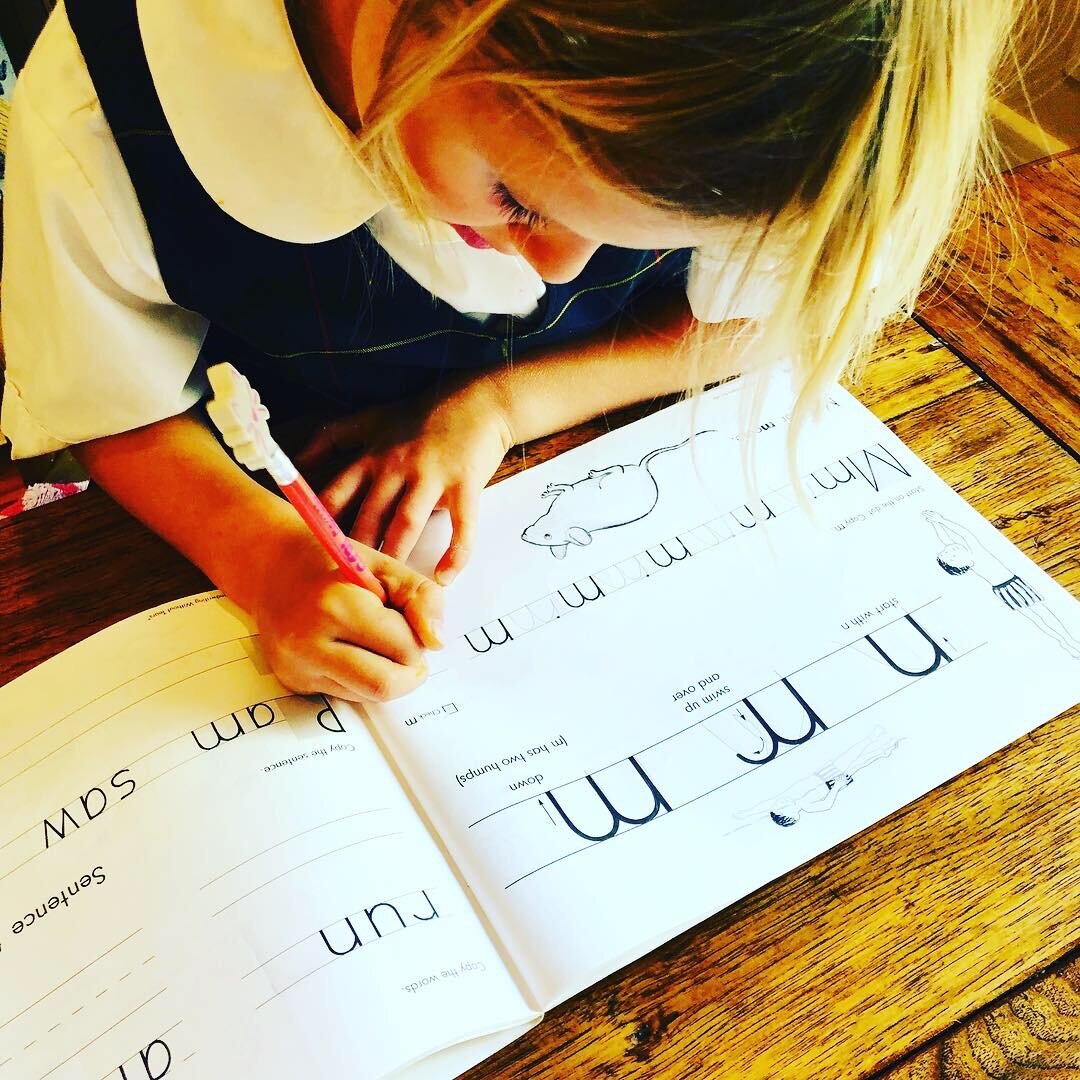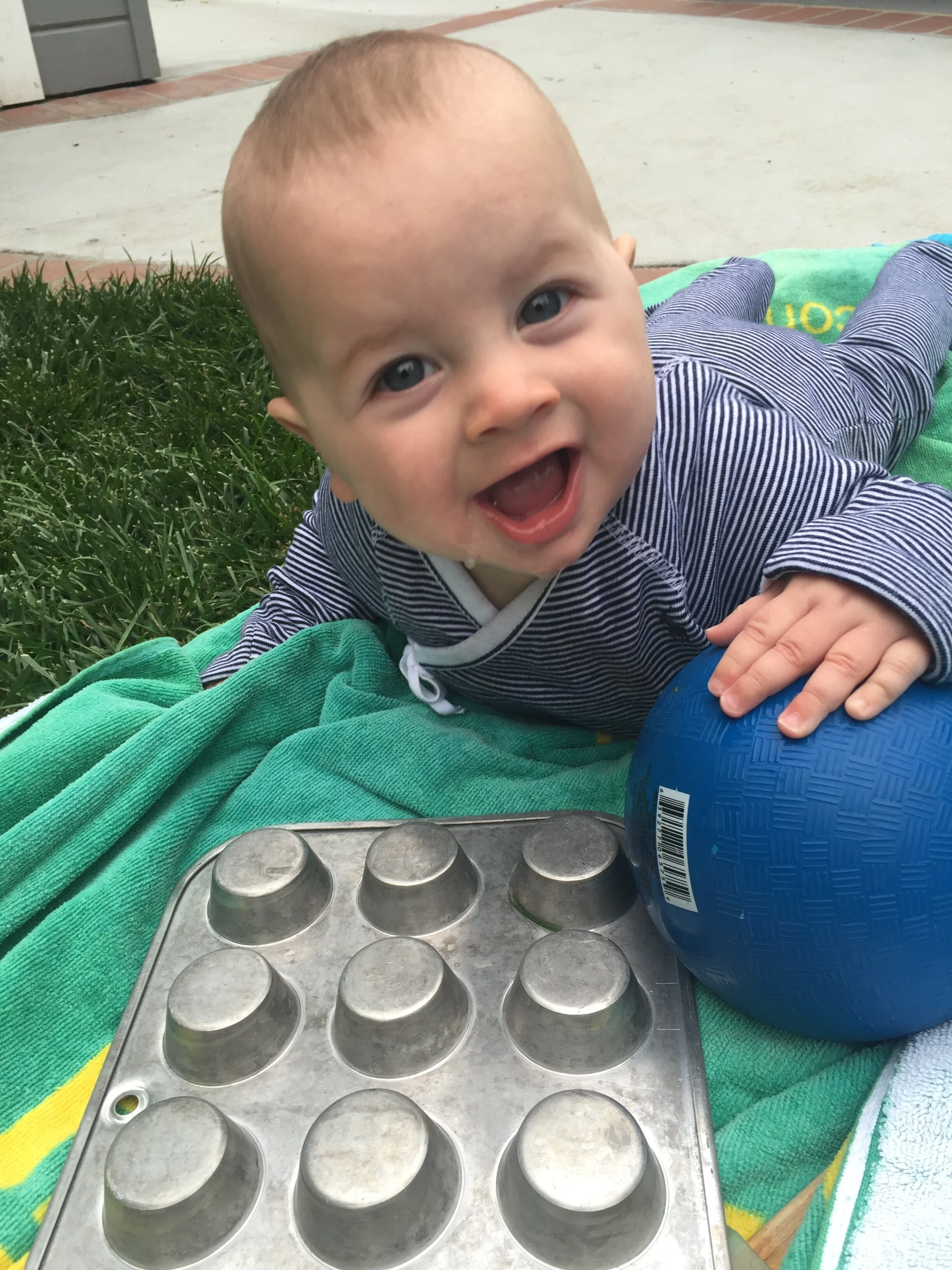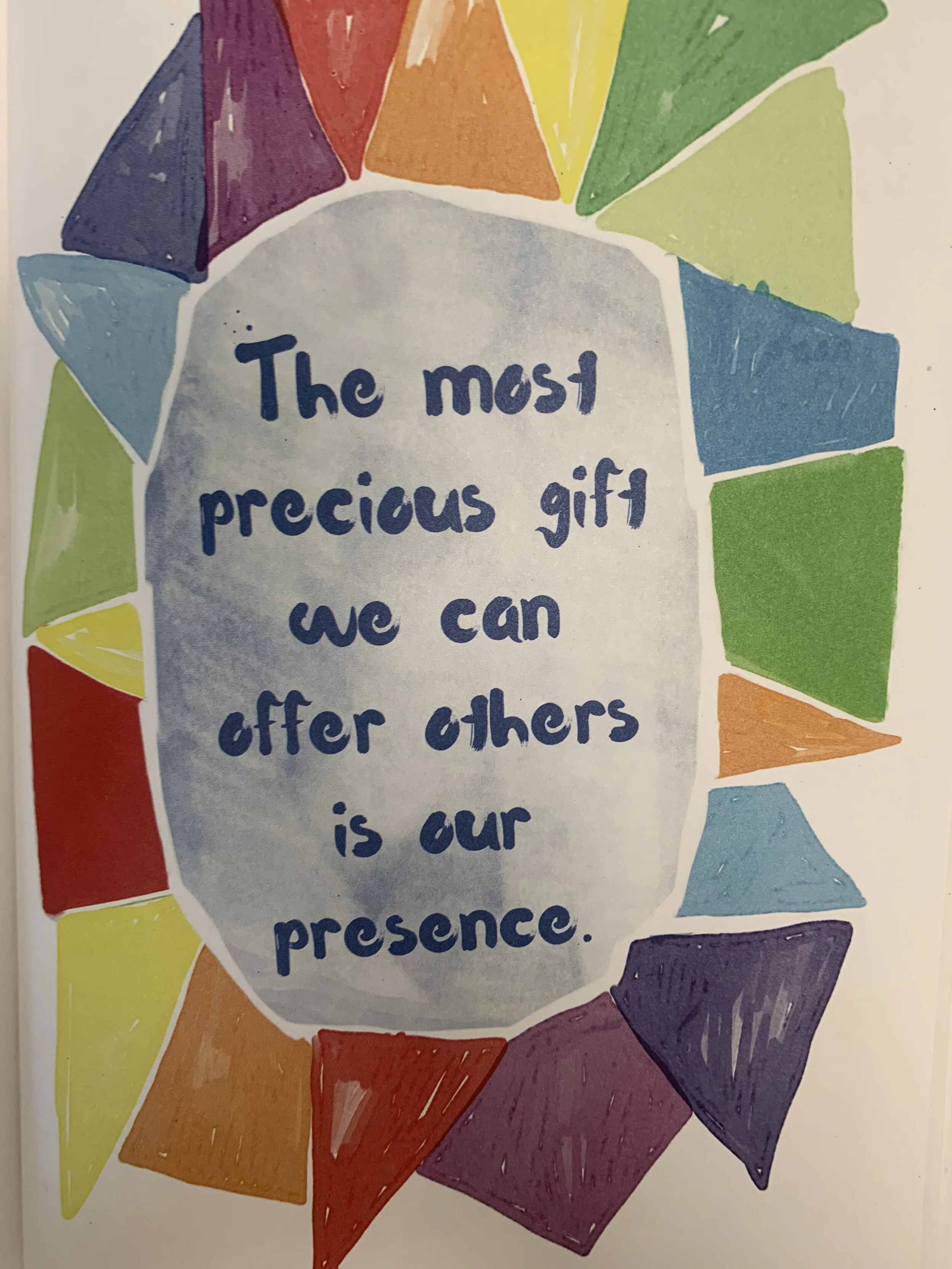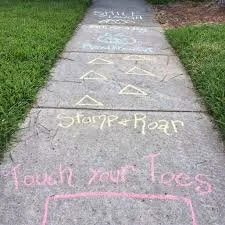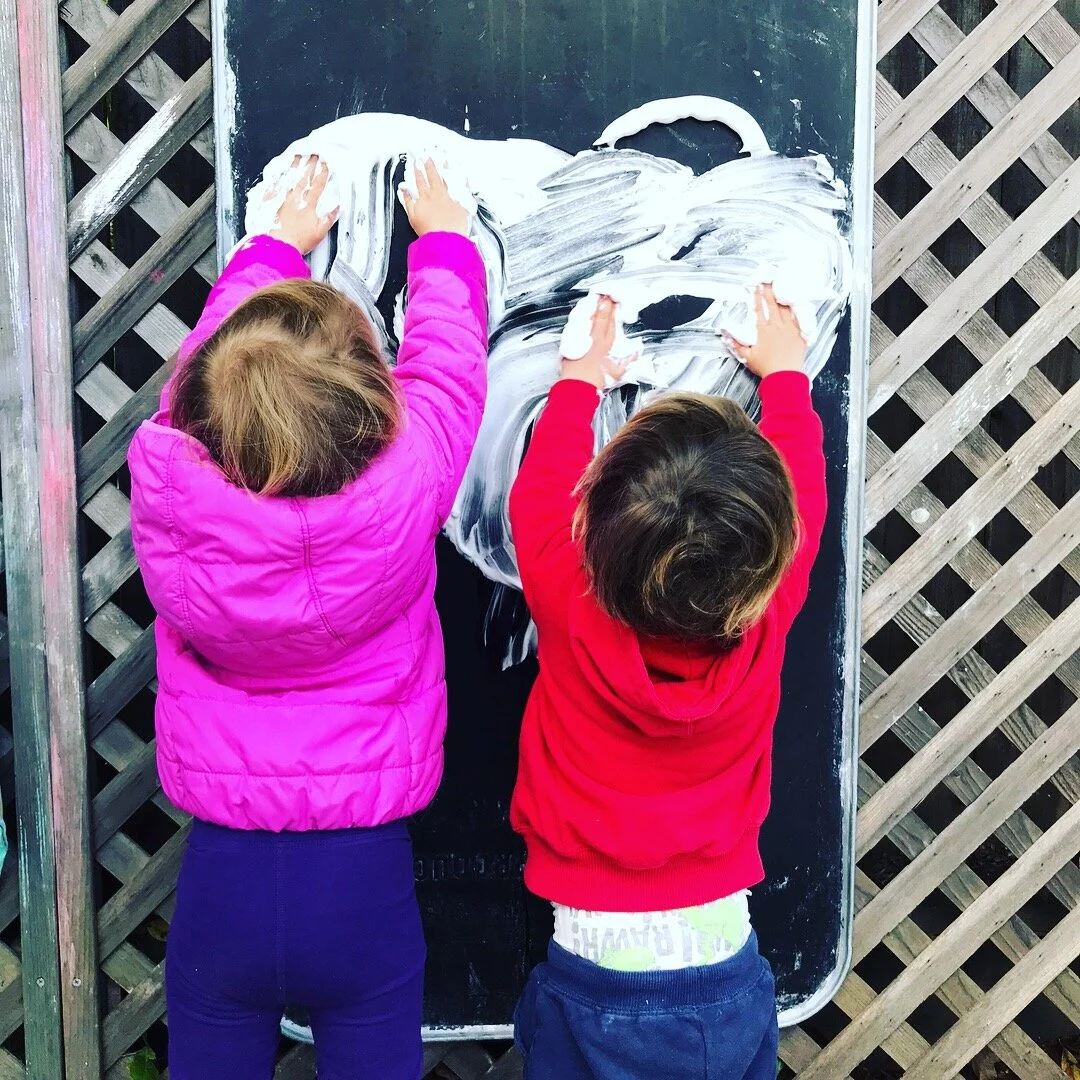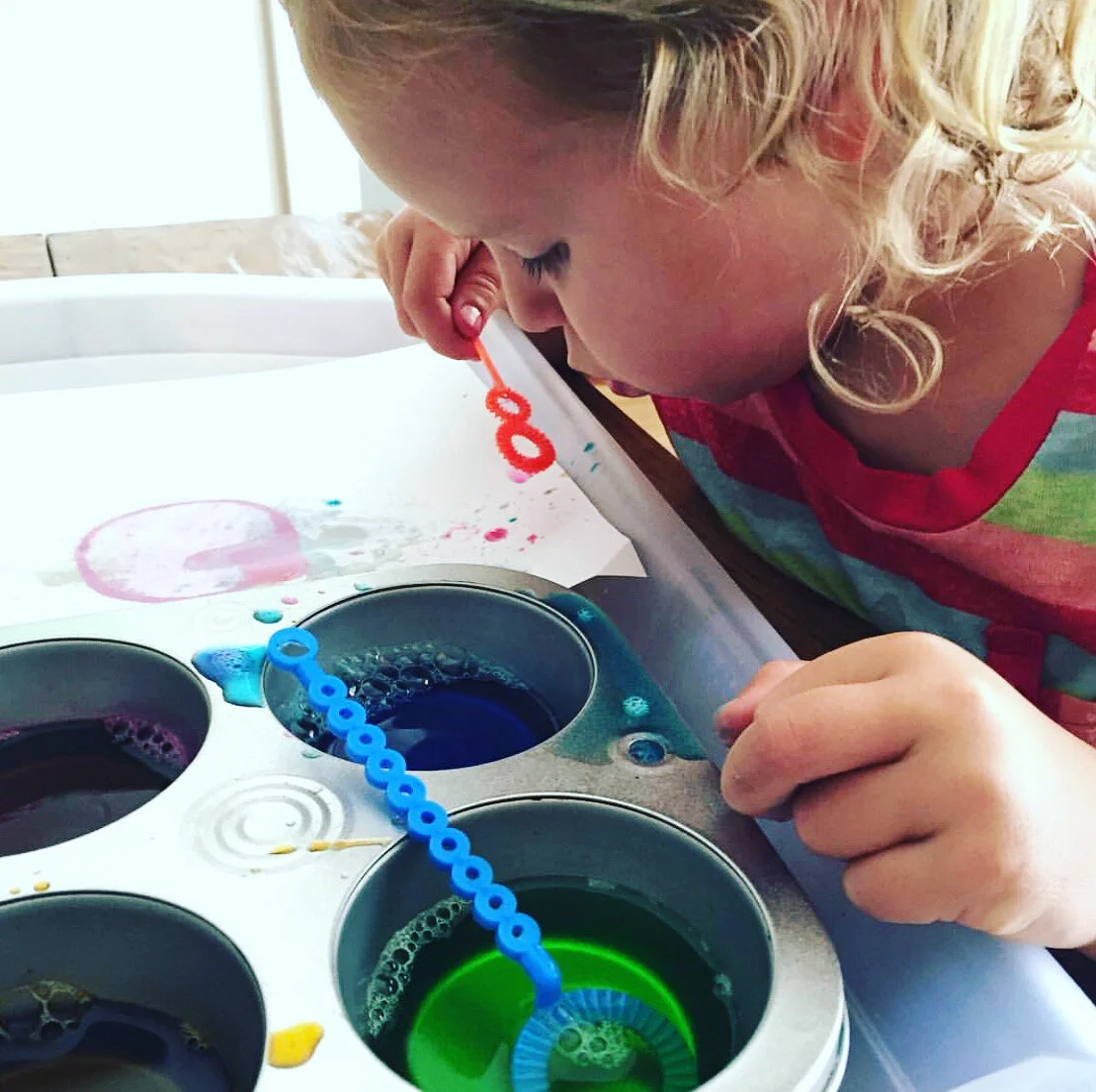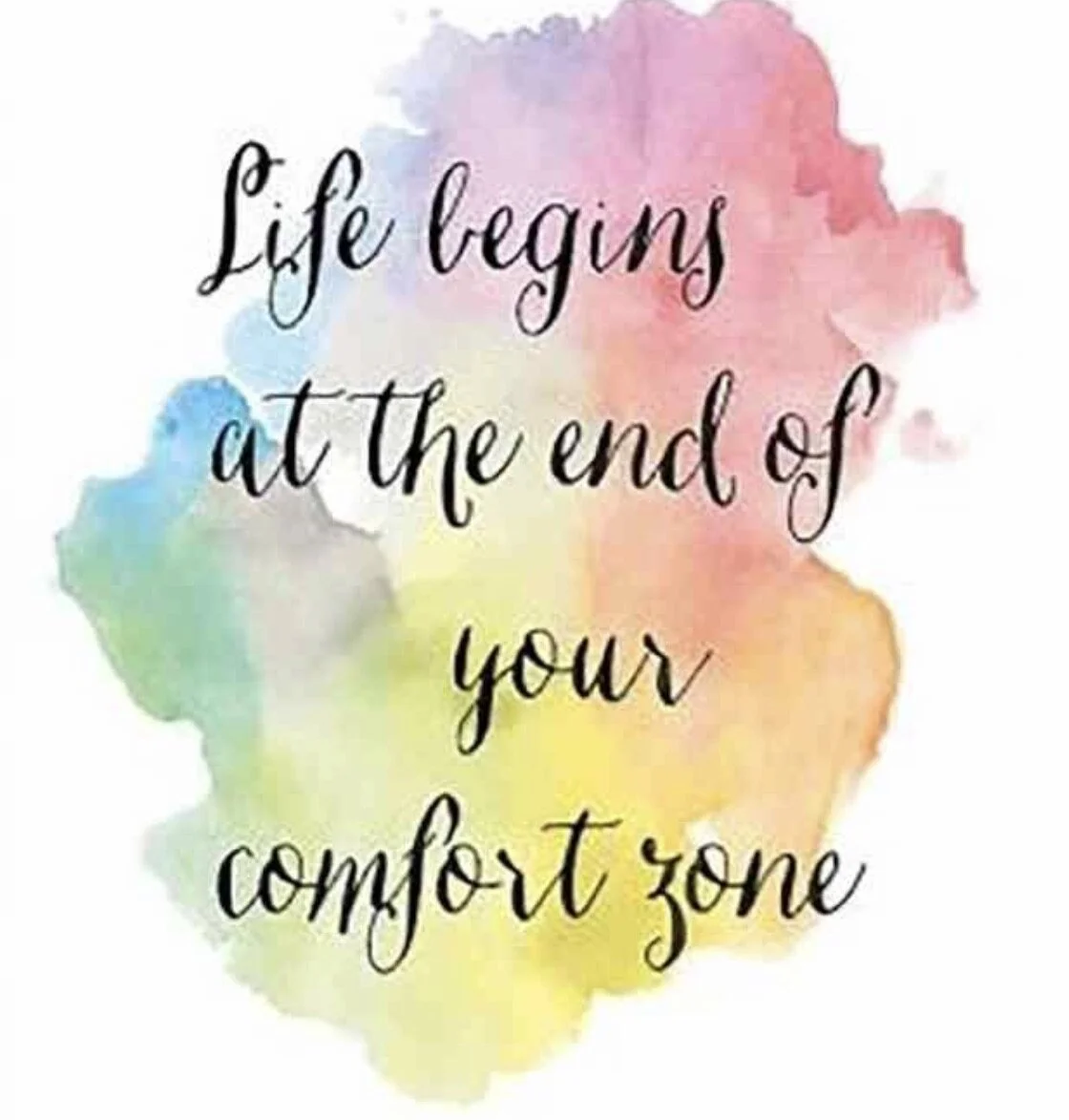I first heard about Nature Deficit Disorder when Jon Young, author of Coyote’s Guide to Connecting with Nature, spoke to the parents of my daughter’s preschool. Being a nature-based school, we were a captive audience and already living this lifestyle with our kiddos, at least while we were at school. It made me start to re-think my therapeutic approach and the healing benefits of being outside. Thus, OT OuTside was born!
What is important to remember about combatting Nature Deficit Disorder is purely- get outside. It does not mean you need a forest and a stream to frolic in. It is about getting outside no matter where you are or what “nature” surrounds you. It could be just walking outside and noticing the wind on your face. Picking up leaves on a city sidewalk, visiting your local park, drawing on your driveway with sidewalk chalk. Outdoor experiences and play do not need to be elaborate or how to construct a fort out of branches. The simple act of mindfulness about the outdoors and noticing how you feel when your body is outside can do wonders! It’s building this lexicon in your child’s vocabulary and helping them check-in with the way their body feels when they are outside and exploring. This will help to build their desire to seek out and respect nature and the environment now and in the future.
I have recently seen the need for nature even more. As I enter classrooms and work with children, the lack of stamina that children have for sitting, focusing, writing, working together, and thinking outside the box is palpable. I don’t have all the answers about why this is. Research will tell me what I want to read- whether the research is pro-nature or if the research is about the merits of app-based curriculum. Both sides of the coin will share the benefits of their side. The research does however, unanimously suggest that children (and adults) are spending less time outdoors and the result is impacting behavior and motor development. What I do know from over 10 years in the field of OT and working with children and working in schools- development is lacking. Angela Hanscom cites much of the research in her book and I witness it firsthand. I see more and more children with decreased hand and shoulder strength. More children cannot sustain their attention. Most of the class cannot sit still or even sit upright. More children are reversing letters and not forming letters correctly.
I hypothesize that we are losing sight of the foundational skills. We are asking kids to do more without preparing them with foundational skills. We all feel the pressure, really wherever we are geographically, to enroll our babies in music class, enroll our school-age kids in sports, to be sure they are “ready” for kindergarten. There is nothing wrong with sports or music- I have done both with my kids- it is when these activities replace unstructured, risk-taking play time outside. The sad thing is that we feel that “ready for kindergarten” means reading and writing. It is so much more than that. It is looking at developmental skills. I challenge you to rethink this. Instead ask yourself:
is my child able to climb the ladder on the play structure?
do they follow a multiple step sequence at the playground?
do they wait their turn for the swing or slide?
do they flatten out play dough and roll it out or is that a challenge?
do they make directional lines (horizontal, vertical, slanted) and simple shapes with clear angles and corners?
do they cut with scissors or is their cutting jagged?
do they tolerate being in a group?
do they tolerate different textures and materials?
do they follow someone else’s plan?
do they color with a fist on the crayon or are they showing an emerging grasp?
do they open food containers independently?
do they pull up their pants independently?
do they wipe themselves in the bathroom?
These are just a sampling of the developmental skills that need to be in place before kids are asked to sit for more than 20 minutes at a time in a classroom, write words, read sight words and sentences, and follow a teacher’s plan for 4-8 hours. So how do we do this? How do we say no to the pressures around us and focus on what is developmentally appropriate for kids of all ages? How do we balance that time for unstructured play time that allows children to take risks and build executive functioning skills- one of the biggest predictors of a child’s IQ, moreso than a child’s reading ability in Kindergarten.
That balance comes from finding time outside in nature. Being outside changes your cortisol (stress hormone) levels. The natural light changes moods. Endorphins get raised. When we are having fun and laughing with our children, oxytocin increases in both parent and child. It helps us refocus on the basics rather than the academics or the daily pressure of the “shoulds.” My child “should be doing ____, I should be doing ____…” we all have these lists. A mindful practice outside focusing on the senses brings us back to the present. Breathing and listening makes us feel that balance and intention that we crave. It might be fleeting but over time it becomes normal and what our body seeks each day. Allowing children time outside, even (gasp) away from parents, will help to nurture these developmental skills, executive functioning skills, problem solving, teamwork, cooperation, navigating social situations, and most importantly learning and trusting in what their body is capable of.
In addition to Jon Young, many others have written about Nature Deficit Disorder, such as Richard Louv, who introduced the concept in Last Child in the Woods. OT and founder of TimberNook, Angela Hanscom writes about the effects of Nature Deficit Disorder in her book Balanced and Barefoot. Here are a sampling of some of those great reads…
So tell me, what do you notice when you spend even a few minutes outside? What are some of your favorite activities to do out in the open? If you missed my post about my favorite outdoor activities, be sure to check it out!
References
https://www.bbc.com/news/science-environment-38094186
https://greatergood.berkeley.edu/article/item/how_to_protect_kids_from_nature_deficit_disorder
https://www.miragenews.com/outdoor-play-at-home-key-for-young-childrens-health-and-development/
http://richardlouv.com/





